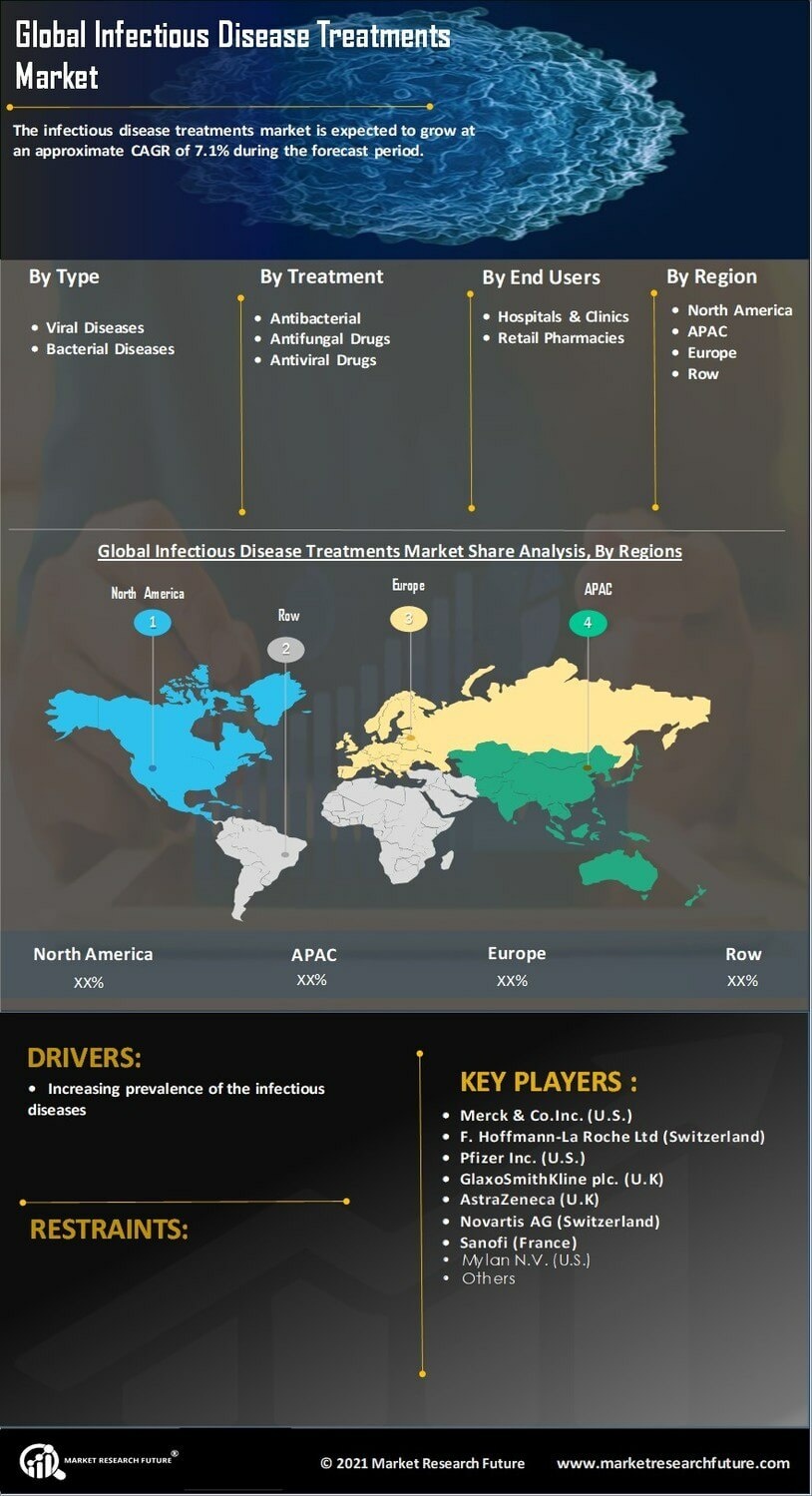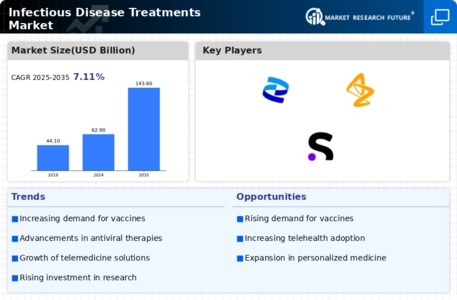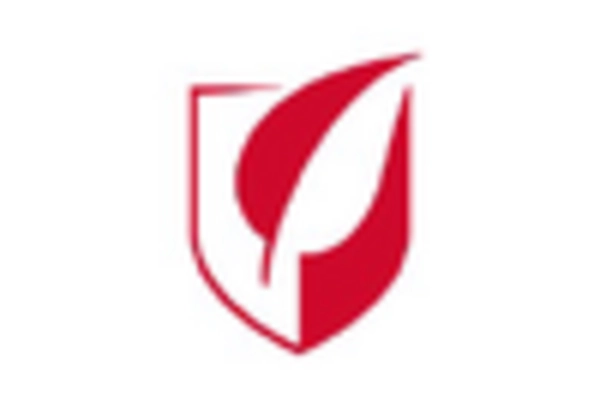Emergence of Antimicrobial Resistance
The emergence of antimicrobial resistance (AMR) poses a formidable challenge to the Infectious Disease Treatments Market. As pathogens evolve and develop resistance to existing treatments, the need for new and effective therapies becomes increasingly urgent. The World Health Organization has identified AMR as one of the top ten global public health threats, indicating a critical need for innovative solutions. The market is responding to this challenge with a surge in research focused on developing novel antibiotics and alternative treatment strategies. Estimates suggest that the economic impact of AMR could reach trillions of dollars if not addressed. Consequently, the Infectious Disease Treatments Market is likely to see increased investment in research and development aimed at combating resistant strains. This focus on innovation is essential for ensuring that effective treatments remain available in the face of evolving microbial threats.
Increasing Incidence of Infectious Diseases
The rising incidence of infectious diseases is a primary driver of the Infectious Disease Treatments Market. Factors such as urbanization, climate change, and increased travel contribute to the spread of pathogens. According to recent estimates, infectious diseases account for approximately 15% of all deaths worldwide, underscoring the urgent need for effective treatments. This growing burden on healthcare systems necessitates the development and deployment of innovative therapies. As a result, pharmaceutical companies are investing heavily in research and development to address this pressing issue. The Infectious Disease Treatments Market is likely to expand as new treatment modalities emerge, including novel antibiotics and antiviral agents, aimed at combating resistant strains of pathogens. Furthermore, public health initiatives aimed at controlling outbreaks will likely bolster demand for effective treatment options.
Rising Investment in Healthcare Infrastructure
Investment in healthcare infrastructure is a significant driver of the Infectious Disease Treatments Market. Governments and private entities are increasingly recognizing the importance of robust healthcare systems in managing infectious diseases. Enhanced infrastructure facilitates better access to treatments and improves disease surveillance capabilities. Recent data indicates that healthcare spending is projected to increase by approximately 5% annually, with a substantial portion allocated to infectious disease management. This influx of funding supports the development of new treatment facilities, research institutions, and public health initiatives. Consequently, the Infectious Disease Treatments Market is likely to benefit from improved access to innovative therapies and a more coordinated response to outbreaks. As healthcare systems strengthen, the demand for effective infectious disease treatments is expected to rise, further propelling market growth.
Technological Advancements in Treatment Modalities
Technological advancements play a crucial role in shaping the Infectious Disease Treatments Market. Innovations in biotechnology, such as CRISPR and gene editing, are paving the way for new therapeutic approaches. These technologies enable the development of targeted treatments that can effectively combat specific pathogens. Additionally, advancements in diagnostic tools allow for quicker identification of infectious agents, facilitating timely treatment. The market for infectious disease treatments is projected to grow significantly, with estimates suggesting a compound annual growth rate of over 7% in the coming years. This growth is driven by the increasing availability of advanced treatment options, including monoclonal antibodies and personalized vaccines. As healthcare providers adopt these technologies, the Infectious Disease Treatments Market is expected to witness a transformation in how infectious diseases are managed and treated.
Growing Awareness and Education on Infectious Diseases
The growing awareness and education surrounding infectious diseases significantly influence the Infectious Disease Treatments Market. Public health campaigns and educational initiatives are increasing knowledge about prevention and treatment options. This heightened awareness leads to earlier diagnosis and treatment, which is crucial in managing infectious diseases effectively. Recent surveys indicate that over 60% of individuals are now more informed about the risks associated with infectious diseases, prompting them to seek medical attention sooner. As a result, healthcare providers are experiencing an uptick in demand for treatments. The Infectious Disease Treatments Market is likely to expand as more individuals become proactive in their health management. Furthermore, educational programs targeting healthcare professionals ensure that they are equipped with the latest information on treatment protocols, thereby enhancing the overall effectiveness of infectious disease management.

















Leave a Comment